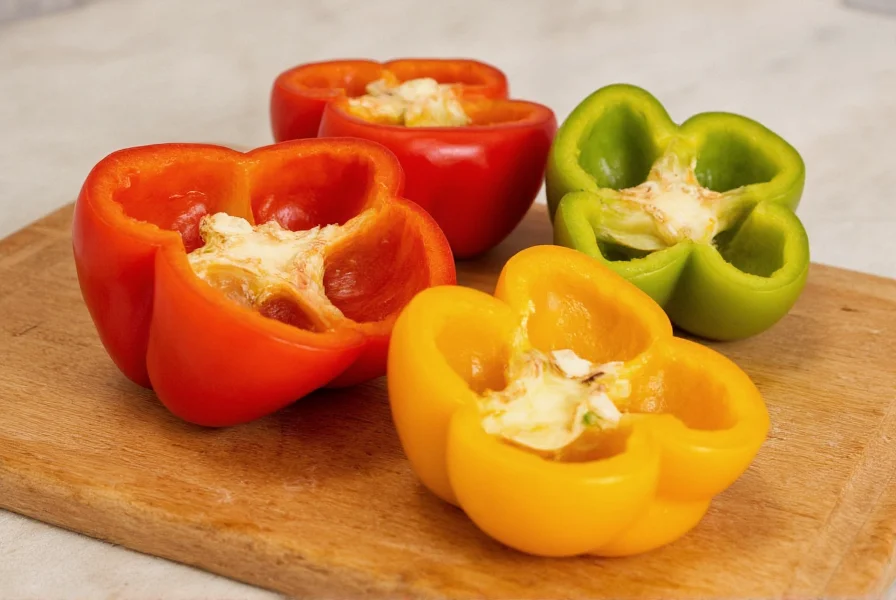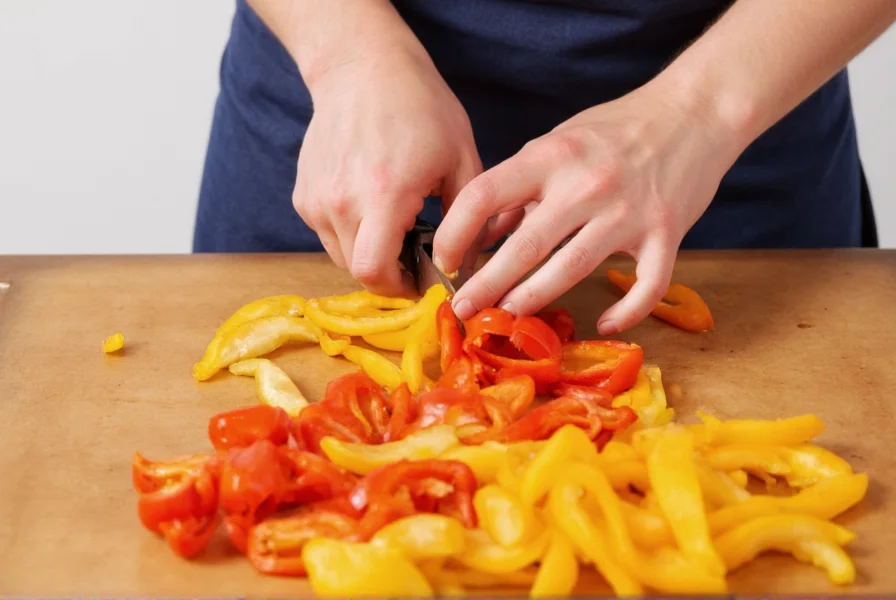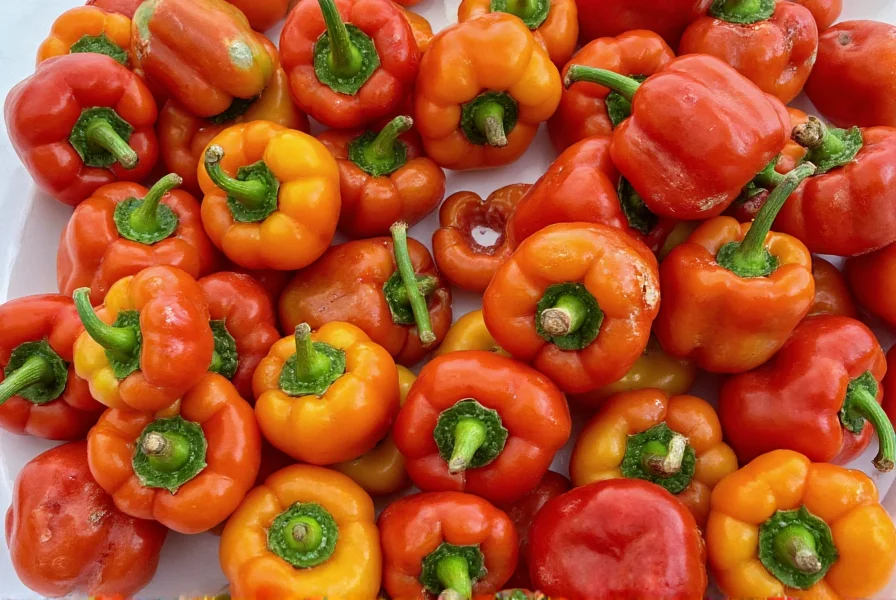There is no recipe for making pepper itself, as pepper (black peppercorns) is a natural spice harvested from the Piper nigrum plant. What you're likely seeking are recipes featuring bell peppers or dishes where black pepper plays a starring role. For immediate use, try this simple roasted bell pepper recipe: slice 3 bell peppers (any color), toss with 2 tbsp olive oil, 1 tsp salt, and 1/2 tsp black pepper. Roast at 400°F (200°C) for 25 minutes until tender and slightly charred.
Understanding the Pepper Confusion in Recipe Searches
When home cooks search for a "recipe for pepper," they're usually experiencing one of two common misunderstandings. First, many confuse black peppercorns (the spice) with bell peppers (the vegetable). Second, some non-native English speakers translate directly from languages where "pepper" refers exclusively to bell peppers.
True pepper (Piper nigrum) requires tropical growing conditions and months of processing to transform berries into the black, white, or green peppercorns we use. You can't realistically make pepper at home—it's harvested commercially in countries like Vietnam, Indonesia, and India. What home cooks actually need are recipes using peppers.
Top Recipes Featuring Bell Peppers
Bell peppers—available in red, yellow, orange, and green varieties—offer sweet flavor and crisp texture perfect for numerous dishes. Here are three versatile recipes that showcase their best qualities.

Classic Stuffed Bell Peppers
This family-friendly dish transforms bell peppers into edible serving vessels. The recipe for stuffed bell peppers works with any color pepper, though red and yellow offer sweeter flavor.
| Ingredient | Measurement | Preparation Tip |
|---|---|---|
| Bell peppers | 4 large | Cut tops off and remove seeds |
| Ground beef or plant-based alternative | 1 lb | Brown thoroughly before mixing |
| Rice (cooked) | 1 cup | Use brown rice for added nutrition |
| Tomato sauce | 1 cup | Add herbs for extra flavor |
| Cheese (optional) | 1/2 cup shredded | Cheddar or mozzarella work well |
Instructions: Preheat oven to 375°F (190°C). Brown meat with onions and garlic. Mix with cooked rice, tomato sauce, and seasonings. Fill prepared peppers, top with cheese if desired, and bake covered for 30 minutes. Uncover and bake 10 more minutes until peppers are tender-crisp.
Three-Pepper Stir Fry with Garlic Sauce
This quick weeknight meal highlights how different pepper varieties contribute unique flavors to a single dish. The recipe for pepper stir fry combines red, yellow, and green bell peppers for visual appeal and taste complexity.
Key technique: Cut peppers into uniform sizes for even cooking. Add green peppers first as they take longest to soften, followed by yellow, then red which needs minimal cooking to maintain sweetness.
For the sauce, combine 3 tbsp soy sauce, 1 tbsp rice vinegar, 1 tbsp honey, 1 tsp sesame oil, and 2 minced garlic cloves. Cook protein of choice, remove from pan, then stir fry peppers until crisp-tender. Return protein to pan, add sauce, and toss until glossy.
Black Pepper Spotlight Recipes
While less common, some dishes feature black pepper as a primary flavor component. These recipes for pepper-forward dishes showcase pepper's complex flavor beyond simple seasoning.
Peppercorn-Crusted Salmon
This elegant yet simple dish demonstrates how coarsely ground black pepper can transform a protein. The recipe for pepper-crusted salmon requires only four ingredients but delivers restaurant-quality results.
Press 2 tbsp freshly cracked black pepper onto salmon fillets after coating with Dijon mustard. Pan-sear skin-side down first, then flip and finish in oven at 400°F (200°C) for 8-10 minutes. The pepper forms a flavorful crust that complements the fish's richness without overpowering it.
Homemade Peppercorn Sauce
For those seeking a true "recipe for pepper" application, this versatile sauce puts black pepper center stage. The creamy peppercorn sauce recipe works beautifully with steaks, roasted vegetables, or as a dip.
Sauté 2 tbsp mixed peppercorns (black, green, pink) in butter until fragrant. Add 1 cup beef or vegetable stock and simmer until reduced by half. Stir in 1/2 cup cream and simmer 5 minutes. Season with salt to taste. The key to perfect pepper sauce is using freshly cracked peppercorns rather than pre-ground pepper for superior flavor.
Pepper Selection and Preparation Guide
Understanding how to choose and prepare peppers significantly impacts recipe success. These practical tips help maximize flavor and texture in your pepper-based dishes.

Choosing Quality Peppers
- Bell peppers: Select firm, glossy specimens with taut skin. Heavier peppers contain more flesh. Red peppers are sweetest as they're fully ripened, while green are less sweet and more bitter.
- Black peppercorns: Buy whole peppercorns and grind fresh. Look for uniform dark color without excessive dust in the container, which indicates age.
Preparation Techniques
Proper pepper preparation affects both cooking time and final dish texture. For bell peppers, the seed removal technique matters—leaving some white pith creates more bitterness, while removing it completely yields sweeter results.
When using black pepper in recipes, remember that heat intensity increases the longer it cooks. Add early for deep, earthy notes or at the end for brighter, sharper heat. Whole peppercorns provide milder flavor than cracked or ground versions.
Frequently Asked Questions
Can I make black pepper at home from scratch?
No, you cannot make black pepper at home. Black peppercorns come from the Piper nigrum vine, which requires tropical growing conditions (minimum 75°F year-round with high humidity). The berries must be harvested, boiled, and sun-dried for 7-10 days to develop their characteristic flavor and dark color—processes impossible to replicate in home kitchens.
What's the difference between recipes for bell peppers versus black pepper recipes?
Recipes featuring bell peppers use the vegetable (capsicum) as a primary ingredient in dishes like stuffed peppers or stir fries. Black pepper recipes, conversely, highlight ground or cracked peppercorns as a dominant flavor component, such as in peppercorn-crusted meats or creamy peppercorn sauces where pepper's heat and complexity shine.
How can I reduce the heat in pepper-based recipes without losing flavor?
To moderate heat while preserving pepper flavor, use a combination of black and milder peppercorns (like pink or white). Alternatively, toast whole peppercorns before grinding—they develop deeper, less aggressive heat. For bell pepper dishes, remove all white pith and seeds which contain most bitterness, and choose red or yellow peppers which are naturally sweeter than green varieties.
What are the best storage methods for peppers to maintain freshness?
Store whole bell peppers in the crisper drawer of your refrigerator for up to 2 weeks. Keep them dry in a paper bag to absorb excess moisture. For black peppercorns, store in an airtight container away from light and heat—properly stored, they maintain flavor for 1-2 years. Never store ground pepper long-term as it loses potency within months.











 浙公网安备
33010002000092号
浙公网安备
33010002000092号 浙B2-20120091-4
浙B2-20120091-4